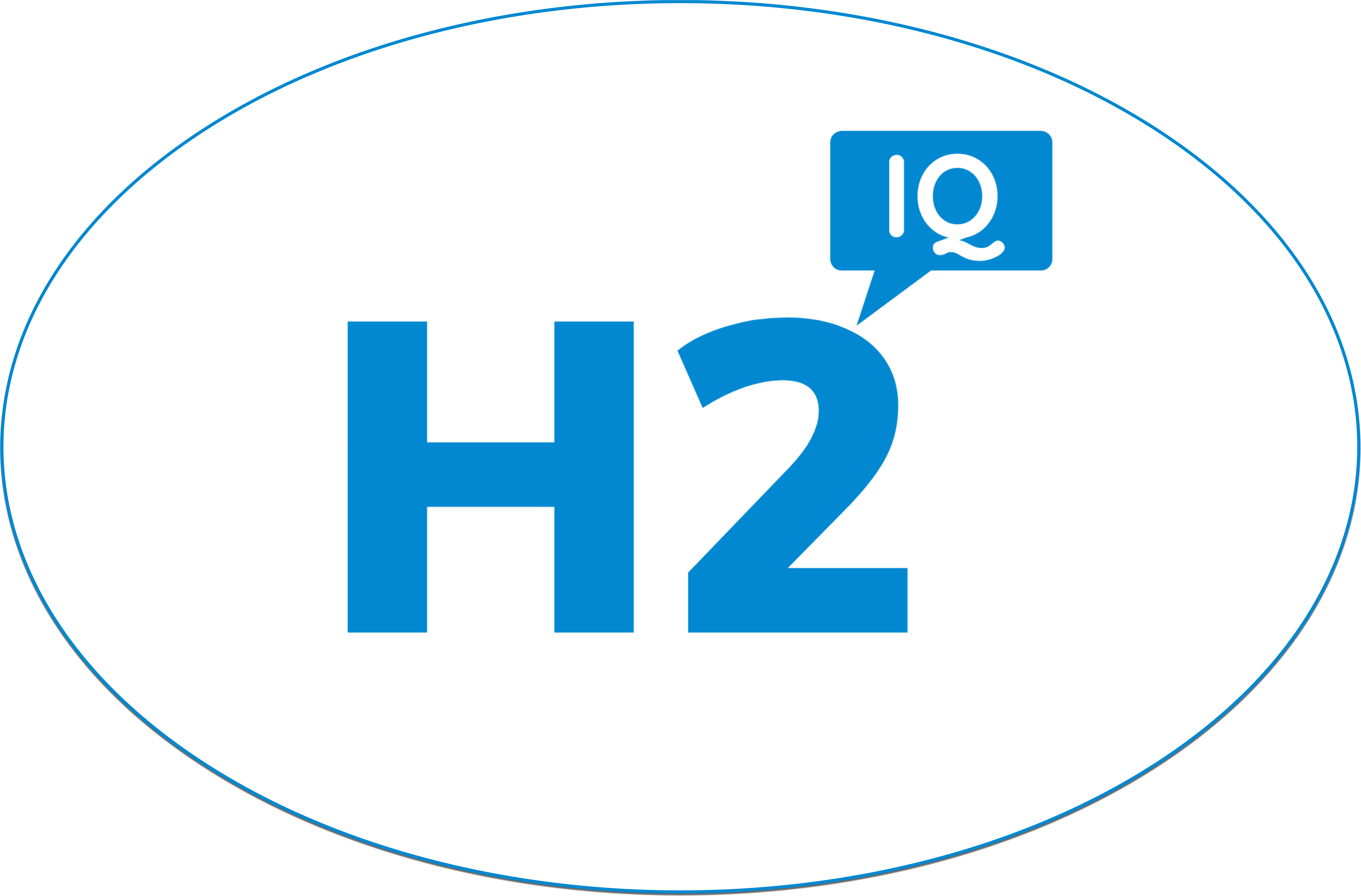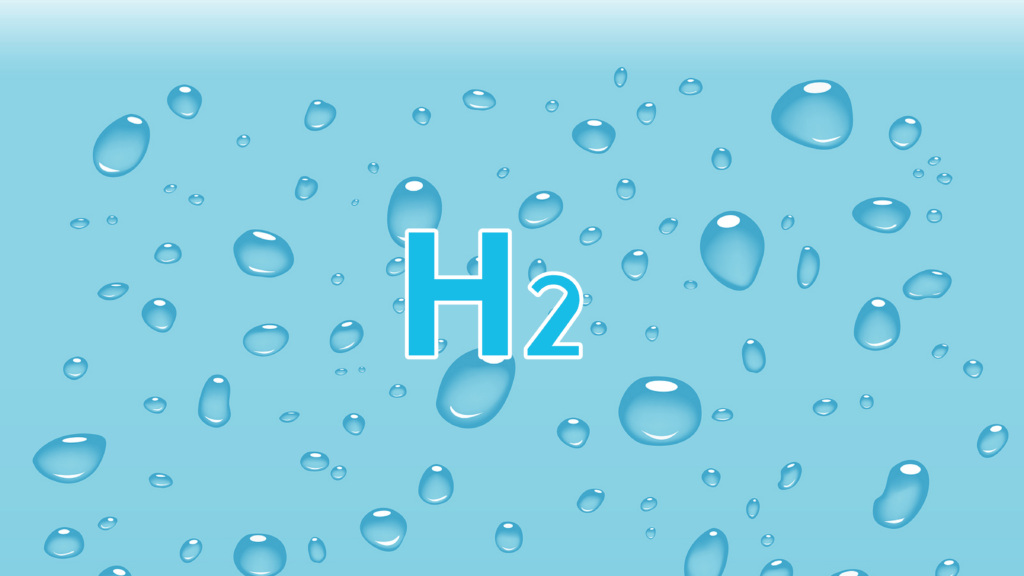Hydrogen can be produced in several ways. Hydrogen production is organized into a color-coded system outlining the different sources, processes, and environmental impact. This article discusses blue hydrogen and how it is produced and used.
How is blue hydrogen produced?
Blue hydrogen is produced using fossil fuels through steam methane reforming, the same technology used to produce gray hydrogen. Steam methane reforming splits natural gas into hydrogen and carbon dioxide (CO2). However, unlike gray hydrogen, CO2 is not released into the atmosphere. Instead, it is stored underground for industrial or commercial use. Therefore, blue hydrogen is low-carbon since there are no CO2 emissions.
What technology is used to make blue hydrogen?
Blue hydrogen is produced through steam methane reforming, also called “natural gas reforming” or “steam reforming”, which focuses on carbon capture and storage.
Steam methane reforming (SMR) is currently the most common technology used to produce hydrogen, accounting for almost 50 percent of global hydrogen production and approximately 80 percent of hydrogen production in the United States.
Blue hydrogen is produced using methane or natural gas as the primary fuel source. However, other non-renewable fuels, such as gasoline, propane, or ethanol, can be used. The process is an endothermic reaction (absorbs heat) with three stages.
In the first stage, liquid is heated to high temperatures (around 1,292-1,832 F or 700-1,000 C) to produce steam. Next, methane (CH4) reacts with the steam in the presence of a catalyst (often nickel-based) to produce hydrogen, carbon monoxide (CO), and carbon dioxide.
The next stage involves a “water-gas shift reaction.” The reactor is filled with water and a catalyst (e.g., iron oxide). The steam breaks down oxygen and hydrogen in the water molecules. The hydrogen is captured, and the oxygen molecules join the carbon monoxide produced in the first stage, turning it into carbon dioxide.
In the final stage, impurities are removed from the gas stream by “pressure-swing adsorption.” This includes carbon dioxide, methane, carbon monoxide, and water. During the pressure swing absorption, contaminants are trapped in absorption materials at high pressure, and pure hydrogen is pumped out of the vessel. The vessel is then depressurized to remove pollutants.
After CO2 and other contaminants are purged from the vessel, it is often routed back as fuel for the SMR furnace. The furnace then produces a flue gas (a mixture of gases resulting from the combustion reactions). Most of the carbon captured from SMR is from the flue gas. However, it can also be converted from syngas (a gas mixture consisting of CO, CO2, and hydrogen).
The most common way to capture CO2 from flue gas or syngas is through pressure swing absorption (discussed above). However, amine absorption can also be used. This involves CO2 reacting with a liquid such as an allyl amine. CO2 flows to an absorber with an amine solution that absorbs CO2 from the gas. Next, the absorber is sent to a regenerator, where it is stripped. The stripped gas from the regenerator is concentrated CO2 that is then dried and compressed for storage.
Benefits and drawbacks of blue hydrogen technologies
Steam methane reforming is currently the cheapest source of industrial hydrogen, making it an attractive option for hydrogen manufacturers. Some of the reasons for this include efficiency and availability.
SMR has an efficiency of approximately 65 to 75 per cent (source) and produces high-purity hydrogen (around 99.99 per cent). Natural gas is also widely available in many countries, such as the U.S. and Canada. SMR is also more mature than other hydrogen technologies. These features allow larger amounts of hydrogen to be produced at a cheaper cost, which can help advance hydrogen fuel technologies.
Another significant benefit of blue hydrogen is that it does not emit CO2 into the atmosphere. It is instead captured and stored underground for industrial use, lowering its carbon footprint. However, the amount of carbon produced is still significant, more than twice the amount of hydrogen.
Using carbon capture and storage avoids greenhouse gas emissions but poses additional threats. For example, condensed CO2 can be corrosive, increasing the chance of leaks or ruptures, which can release into the air or taint nearby water sources. Carbon capture is also quite expensive and adds cost to hydrogen production.
Another issue is that the use of fossil fuels in hydrogen production may increase the demand for natural gas. However, alternative fuels like biomass can be used to curb demand issues. Biomass is a renewable organic resource, such as wood, crops, manure, etc. It is readily available in many parts of the world and can help offset the emissions used to produce hydrogen because biomass recycles CO2 (e.g., plants consume CO2 from the atmosphere, and plants are a type of biomass).
Other issues with blue hydrogen technologies include high production costs, additional capture and storage costs, high energy consumption, and catalyst problems. For example, the sulfur in specific fuel sources may poison catalysts used in the reaction.
General hydrogen challenges also impact blue hydrogen technologies. This includes difficulties with storage and high combustibility, which could lead to dangerous explosions.
How is blue hydrogen used?
Hydrogen has several applications, such as oil refining, treating metals, hydrogen fuel cell transportation, rocket fuel, producing electricity, fertilizers, etc.
Blue hydrogen is one of the most used forms of hydrogen. One of the primary reasons for this is affordability. Steam methane reforming is not cheap, and additional costs are added for capture and storage. However, it is often more time and cost-effective when compared to other methods.
For example, green hydrogen technologies are more sustainable, but electrolysis is newer and less widely used and tested. It can also use high-cost materials or electricity sources. Therefore, cheap, wide-scale green hydrogen production would not be possible like with blue hydrogen. The ability for wide-scale production of blue hydrogen has the potential to help advance hydrogen fuel technologies. For example, companies like Imperial see the potential of blue hydrogen to progress their plans to build a renewable diesel manufacturing facility.
Canada also considers blue hydrogen to be “clean hydrogen.” For example, Canada and Germany signed a pact to initiate efforts toward exporting clean hydrogen across the Atlantic. Germany sees green hydrogen as “clean hydrogen.” However, Canada sees clean hydrogen as a mix of blue and green hydrogen.





